|
Atmospheric soundings have been used for many years to record upper air data and are used in a variety of ways. Upper air data are measured by attaching a radiosonde to a weather balloon filled with helium or hydrogen and then released into the air. Using radio frequencies, data measured by the radiosonde are transmitted back to the ground and interpreted by forecasters and/or researchers. Soundings are most commonly used by The National Weather Service (NWS). NWS releases balloons twice a day to help understand current conditions, forecast upcoming weather, and to be used in weather prediction models. Universities and other research institutions involved in field work can use soundings for future and current research, as well as share their data with NWS forecast offices for nowcasting and increasing forecast accuracy. Over the years, SWIRLL has provided atmospheric sounding data which has played vital roles in numerous field campaigns and has helped forecasters at NWS and Storm Prediction Center forecast severe and hazardous weather across the region. Most of these soundings are launched by UAH students within the Atmospheric and Earth Science department. Through the department, SWIRLL facilitates the student-led organization, UAH Profile Sounding Team for Operational and Research Meteorology (UPSTORM) in which students gain hands-on experience prepping and launching soundings in the field. This organization is designed to serve as a gateway for student involvement within SWIRLL. Students can join UPSTORM their first year at UAH and are encouraged to participate in as many of the launches as they can. As they get comfortable launching soundings, they have the opportunity to go into the field during field deployments in which they will be a part of a 3-4 person team responsible for launching soundings for operational forecasting and research. During an average field deployment, a total of 12-24 students making up 3-4 sounding teams can be deployed into to the field with each team responsible for launching 8-10 soundings throughout the entire deployment. Most teams are co-located with the other SWIRLL platforms (MAX, MIPS, MoDLS, RaDAPS, or M3V) giving students the ability to gain hands-on experience with the instruments on these platforms early on. Most Students graduating from the department can have upwards of 50 to 100 (or possibly more) balloon launches under their belt, making them near experts in sounding launches and interpreting the data. Currently, SWIRLL has three mobile Intermet, three mobile Windsond, and one stationary Intermet sounding systems which supports up to 6 teams in the field and 1 team located at SWIRLl. Sounding data launched by UAH is typically stored on local servers to be used for research within the department. Sounding plots (skew-T/Log-P) are generated for each sounding for real-time viewing, and then saved with the raw data. Data can be provided upon request by emailing preston.pangle@uah.edu (Data Manager) or kevin.knupp@nsstc.uah.edu (PI). |
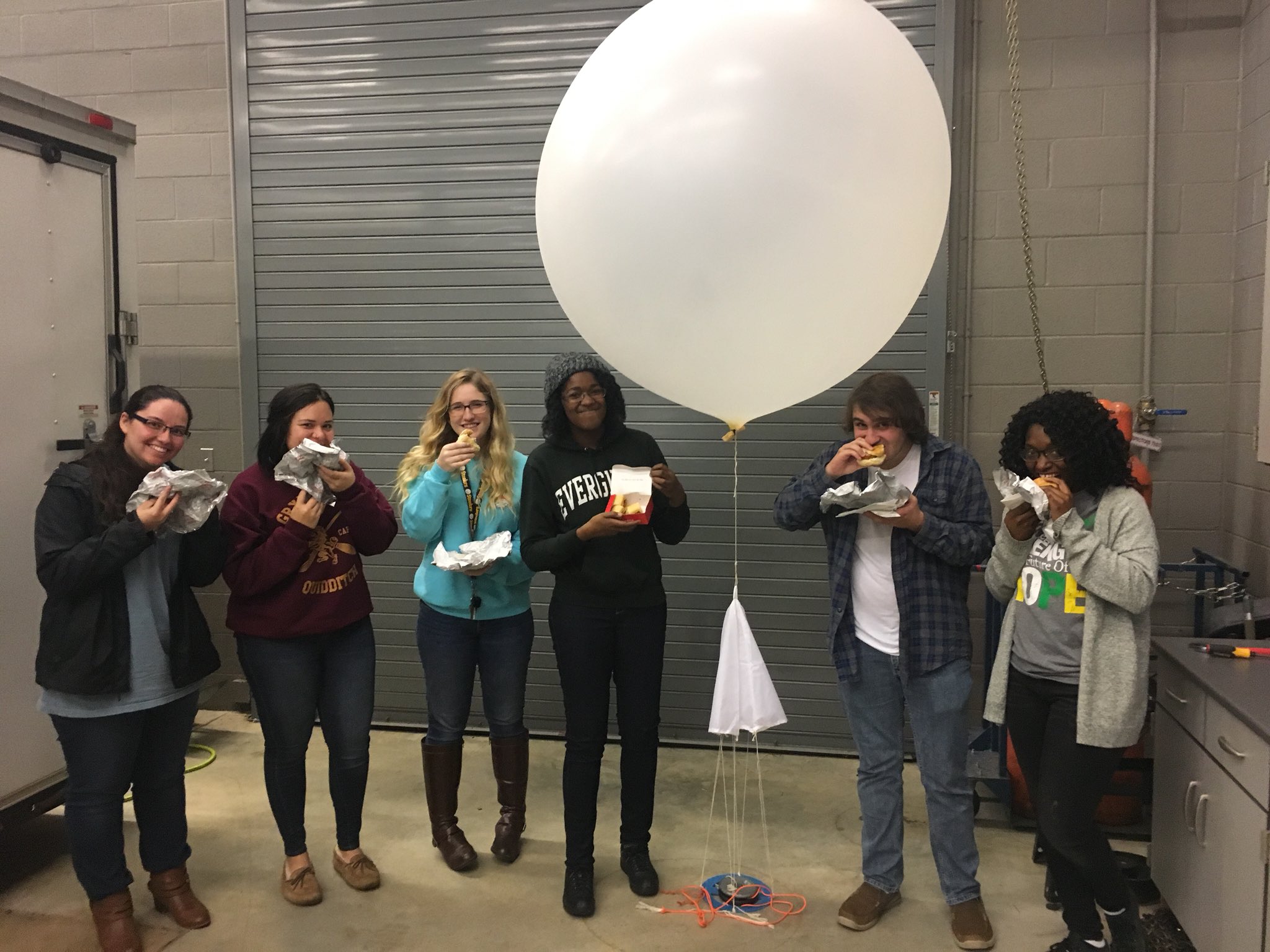
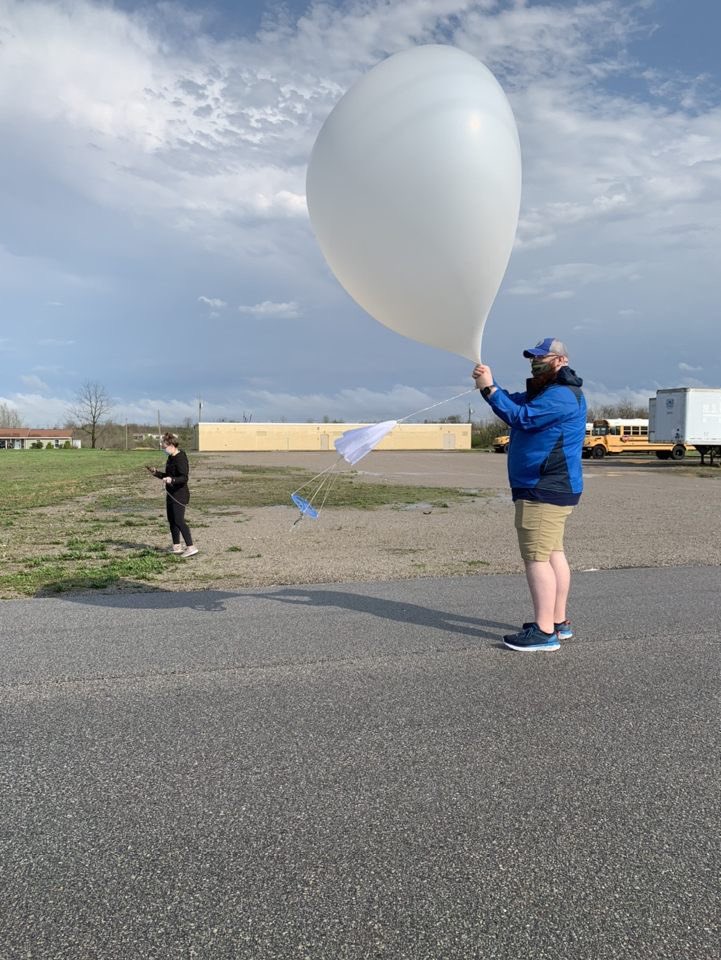
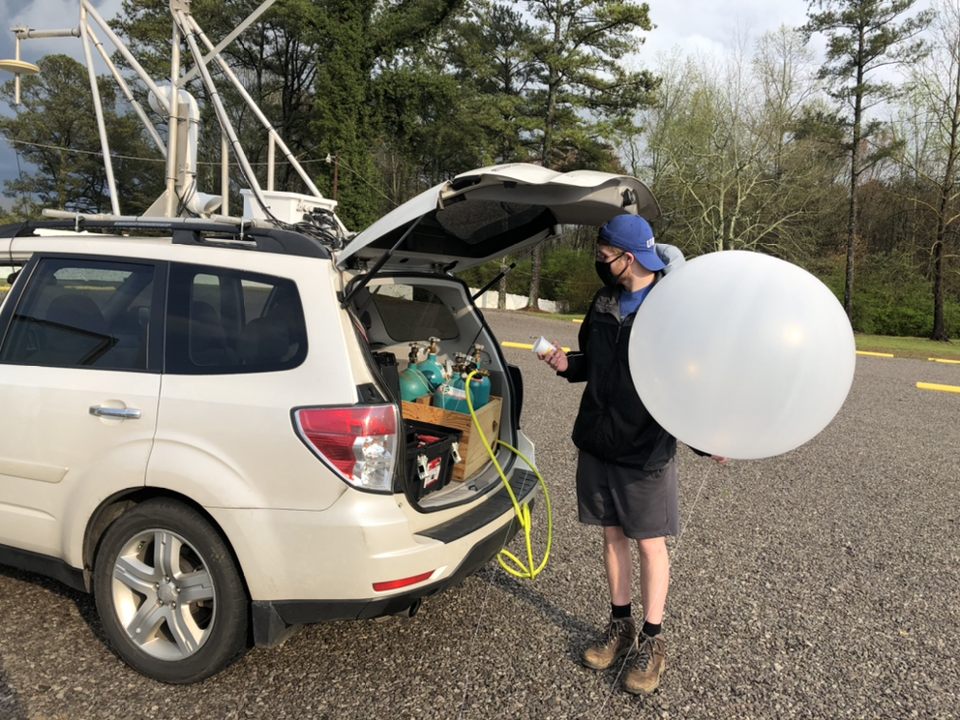
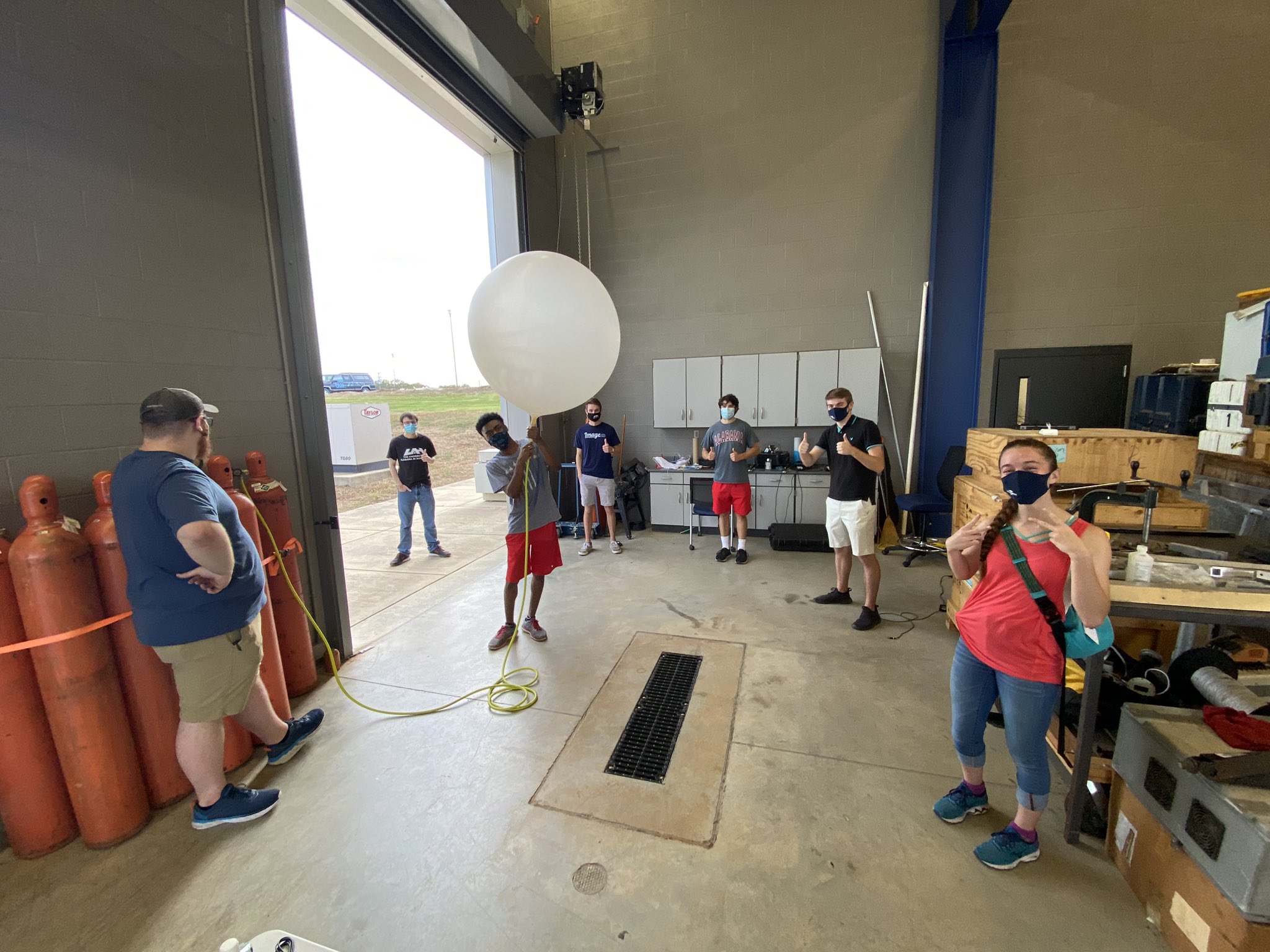
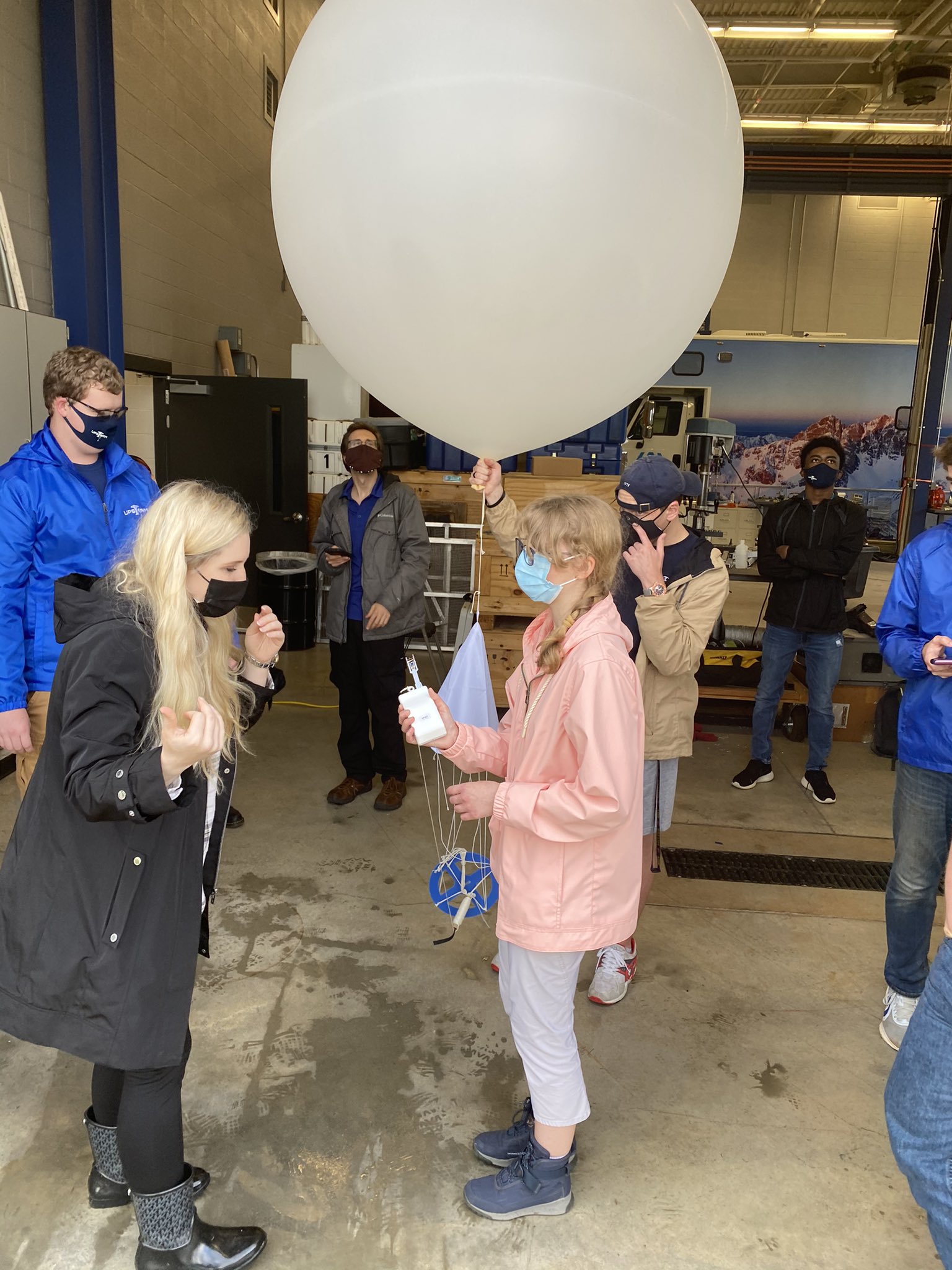
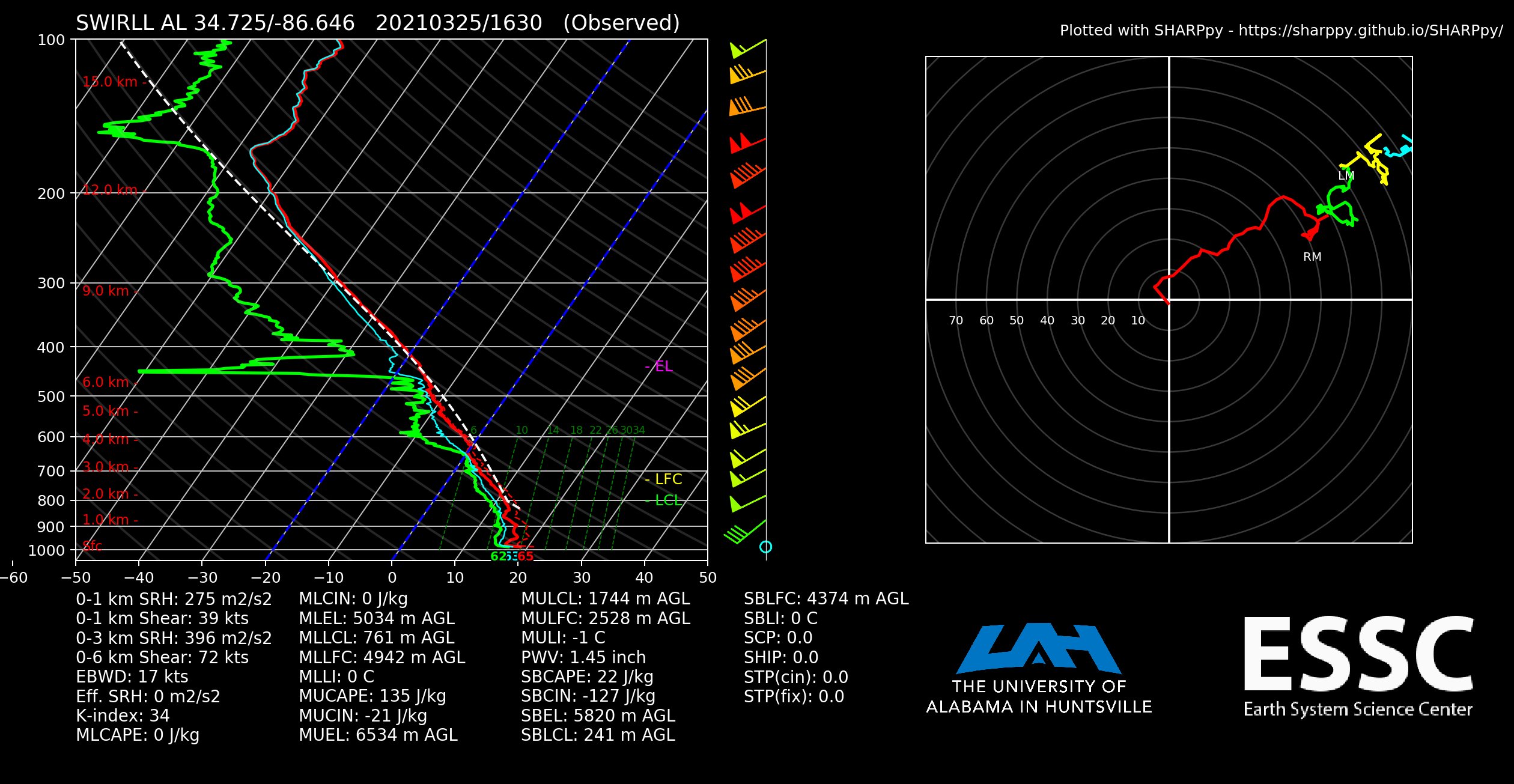
Sounding launched on 25 March 2021 severe weather day. The sounding shows plenty of shear, but SWIRLL is North of the warm front which is limiting strong storms. 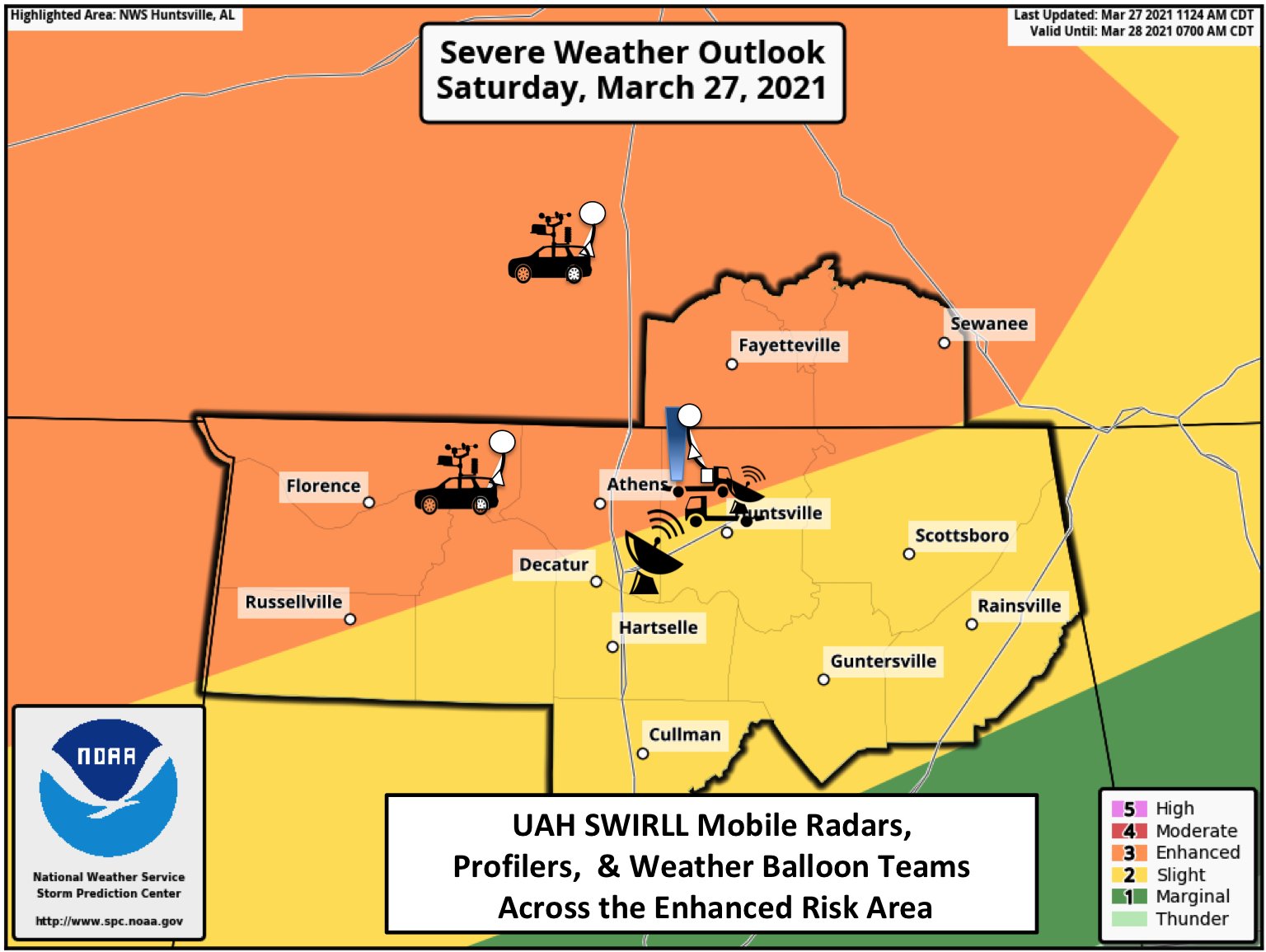
Sounding teams and instruments deployed across N AL and S TN.
×
|

